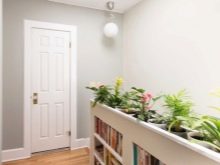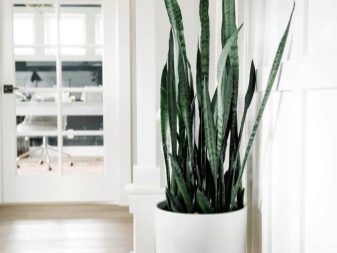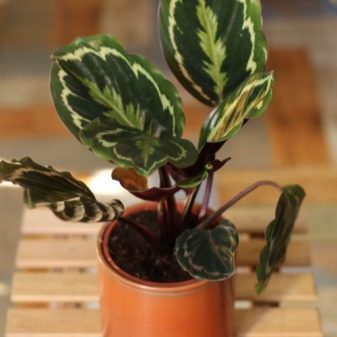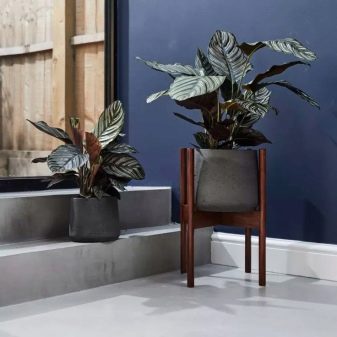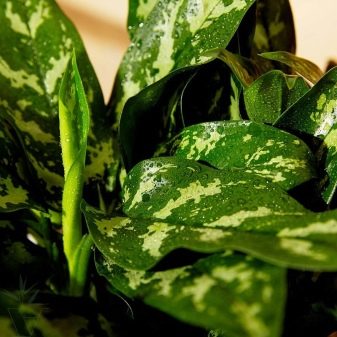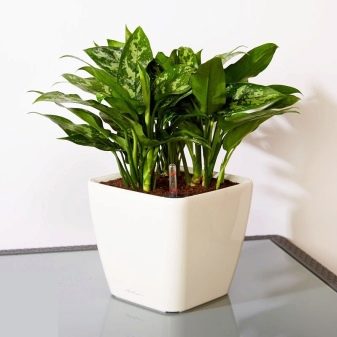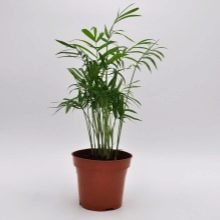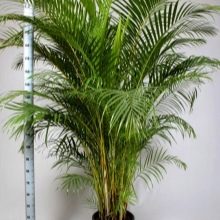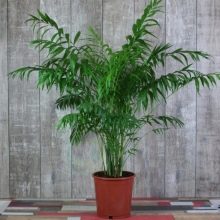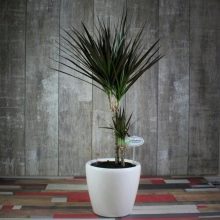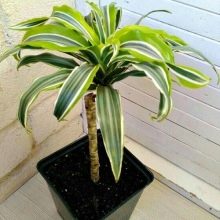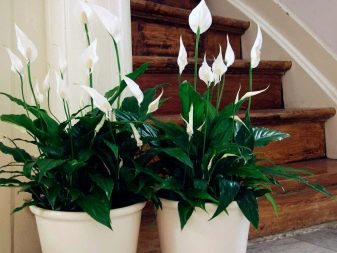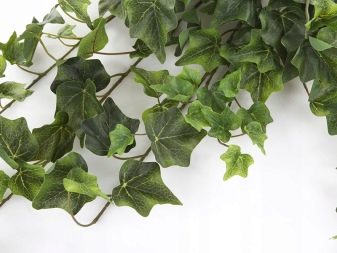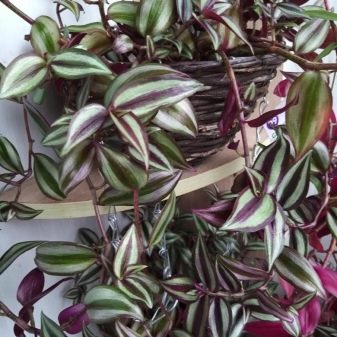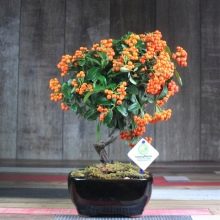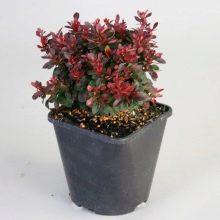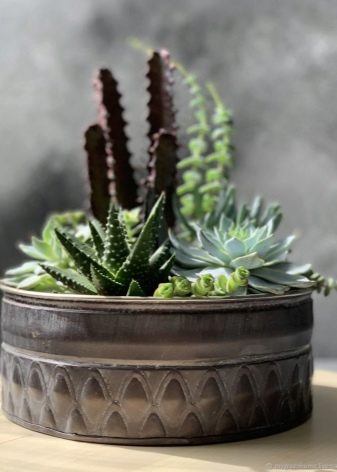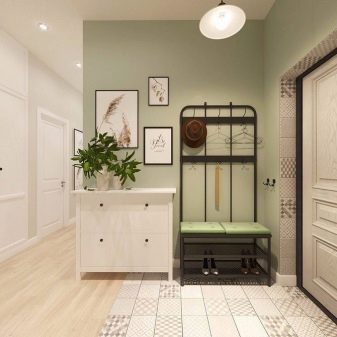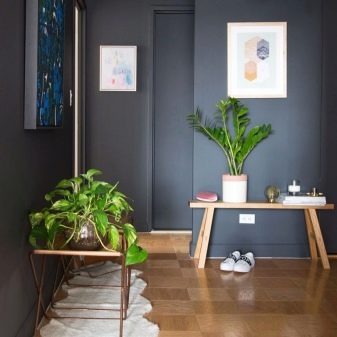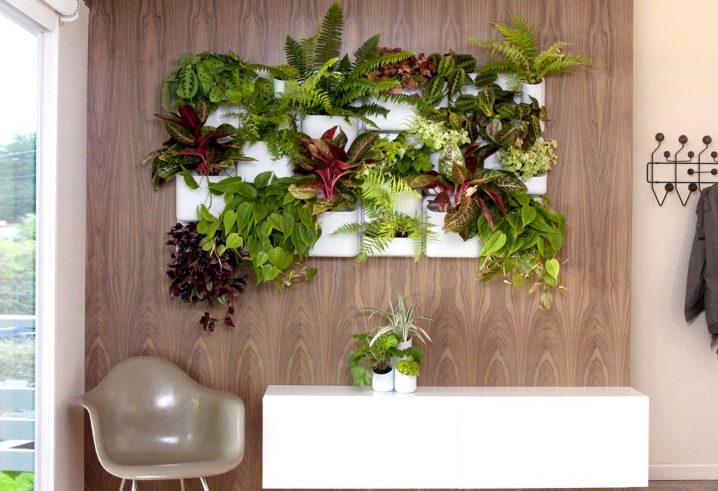Shade-loving indoor plants for the hallway
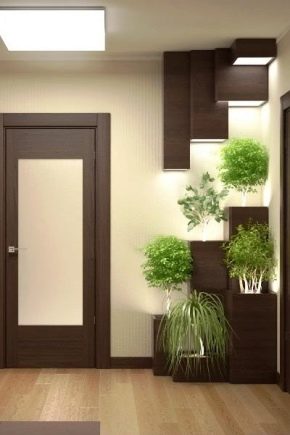
Shade-loving indoor plants, placed in the space of a dark hallway, allow you to give it a cozy and habitable look. In addition to their extraordinary attractiveness, these representatives of the world of decorative flora are characterized by unpretentiousness, endurance, resistance to damage by pests and pathogens of various diseases. What kind of plants that can fully develop in conditions of a lack of light can decorate the hallway and the darkest rooms in the house?
Deciduous ornamental plants
This category includes indoor plants with foliage of an unusual shape and original color. Most of them either do not bloom at home, or bloom very rarely. The most famous types of deciduous ornamental plants are presented below.
Sansevieria
This unpretentious evergreen perennial plant is better known under the funny name "mother-in-law's tongue". The beauty of sansevieria is valued by flower growers not only for its unpretentiousness to the conditions of detention, but also for the original marble color of strong and long xiphoid leaves. Under favorable conditions for keeping the plant, the length of the leaves can reach 1 meter or more.
Sansevieria is usually grown in spacious floor pots.
Sheflera
Despite its exotic origin, the sheflera (also called the "shefflera") is considered a very unpretentious plant that does not need specific conditions of maintenance and special care. An adult cheflera is a graceful bush or tree, the maximum height of which can reach 2-2.5 meters. In indoor floriculture, the chefler has become widespread due to the extraordinary decorativeness that is provided to her by spectacular palm leaves, shaped like a human palm.
Other
Indoor ferns - an extensive group of unpretentious plants with original carved leaves of various shades and shapes. For growing in conditions of a lack of light, such representatives of the group as kostenets, mnogoryadnik, maidenhair ("venere of hair") are suitable.
Calathea is an exotic houseplant, prized by flower growers for its original variegated foliage, covered with intricate patterns (There are also flowering varieties - saffron calathea and Varshevich calathea, grown for spectacular flowers). Calatheas prefer to grow in places with diffused light - in direct sunlight, they quickly lose their attractiveness.
Calathea Bahema is considered the most unpretentious, valued by plant breeders for its long lanceolate leaves of a silvery-green color.
Aglaonema is a hardy deciduous ornamental plant, ideal for indoor low light production. The plant is remarkable for its large oval or heart-shaped leaves of variegated, marble or monochromatic color. It does not tolerate dry air, therefore it should not be placed near heating devices.
Palm trees overview
Hamedorea - a genus of unpretentious shade-tolerant palms, the height of which at home can reach 1-1.2 meters. The most widespread in indoor floriculture are such highly decorative species and hybrids as:
- hamedorea graceful;
- chamedorea is high;
- hamedorea Bridble.
Dracaena - shade-tolerant houseplant, which is otherwise called "false palm".Dracaena received its second name because of an interesting feature: as it grows, its trunk becomes bare, and large xiphoid leaves remain only at the top, which gives the plant a resemblance to a palm tree. The most popular among florists are the following types:
- dracaena marginata;
- dracaena unfolded;
- fragrant dracaena.
What kind of flowering plants can you put?
It is worth mentioning such representatives of the world of decorative flora, which are able not only to fully grow and develop in dark rooms, but also to bloom.
- Spathiphyllum - a very hardy evergreen with glossy oval or lanceolate basal leaves combined into a tight rosette. Spathiphyllum flowers are golden yellow or creamy oblong cobs wrapped in a snow-white elliptical blanket.
- Chlorophytum - a drought-resistant indoor plant that can actively develop and bloom even in rooms without windows, in conditions of extreme light deficiency. Chlorophytum leaves are long, drooping, united in a basal rosette. The flowers are small, white, gathered in openwork panicles.
Shade-tolerant vines
Hedera (indoor ivy) is an elegant ornamental plant, prized by flower growers for the spectacular carved foliage that covers long, winding lashes. This shade-tolerant vine prefers to grow in shaded areas or under soft, diffused light. In bright light, emerald heder leaves fade, losing their decorative effect.
Tradescantia ampelous is an unpretentious evergreen perennial with long succulent shoots covered with single ovoid or lanceolate leaves. Depending on the varietal characteristics, the leaves can be monochromatic (green, purple) or variegated, two- or three-colored.
Under favorable growing conditions, regular watering and periodic feeding, Tradescantia can please its owner with small but very beautiful flowers.
Other options
Shade-tolerant bonsai trees can organically fit into the space of a dark hallway. They can be kept on a nightstand in the hallway, on open shelves or on consoles. In the bonsai style, growers usually grow unpretentious plants such as:
- barberry;
- pyracantha;
- laurel;
- hawthorn;
- carmona.
Cacti and succulents are another large group of shade-tolerant, unpretentious plants that can be used to decorate a dark hallway or living room. So, for growing in conditions of a deficit of daylight, flower growers most often choose fat women, haworthia, ripsalis. To the advantages of these plants, flower growers include not only shade tolerance, but also drought tolerance, and the absence of the need for regular feeding.
Examples in the interior
Potted palms are able to organically fit into the space of the hallway, made in the Scandinavian style, which is characterized by the use of calm, muted tones. The need of plants for lighting is compensated by artificial light sources - a chandelier, built-in ceiling lamps, table lamps. It is worth noting (and this can be seen in the example presented) that the use of tall potted plants is advisable for spacious hallways, where they will not create inconvenience.
Low potted plants (aglaonema, ferns, spathiphyllum) are optimal for small rooms and small hallways. Designers recommend placing them on pedestals, consoles and shelves, where they will attract attention and, at the same time, receive a sufficient amount of light from ceiling and wall lamps.
For decorating hallways and rooms, in which there is not only enough light, but also free space, you can use special wall stands. The sections of these stands can easily accommodate pots with low green plants and any useful household items.This design option will "revive" a dark hallway without any damage to its area.
